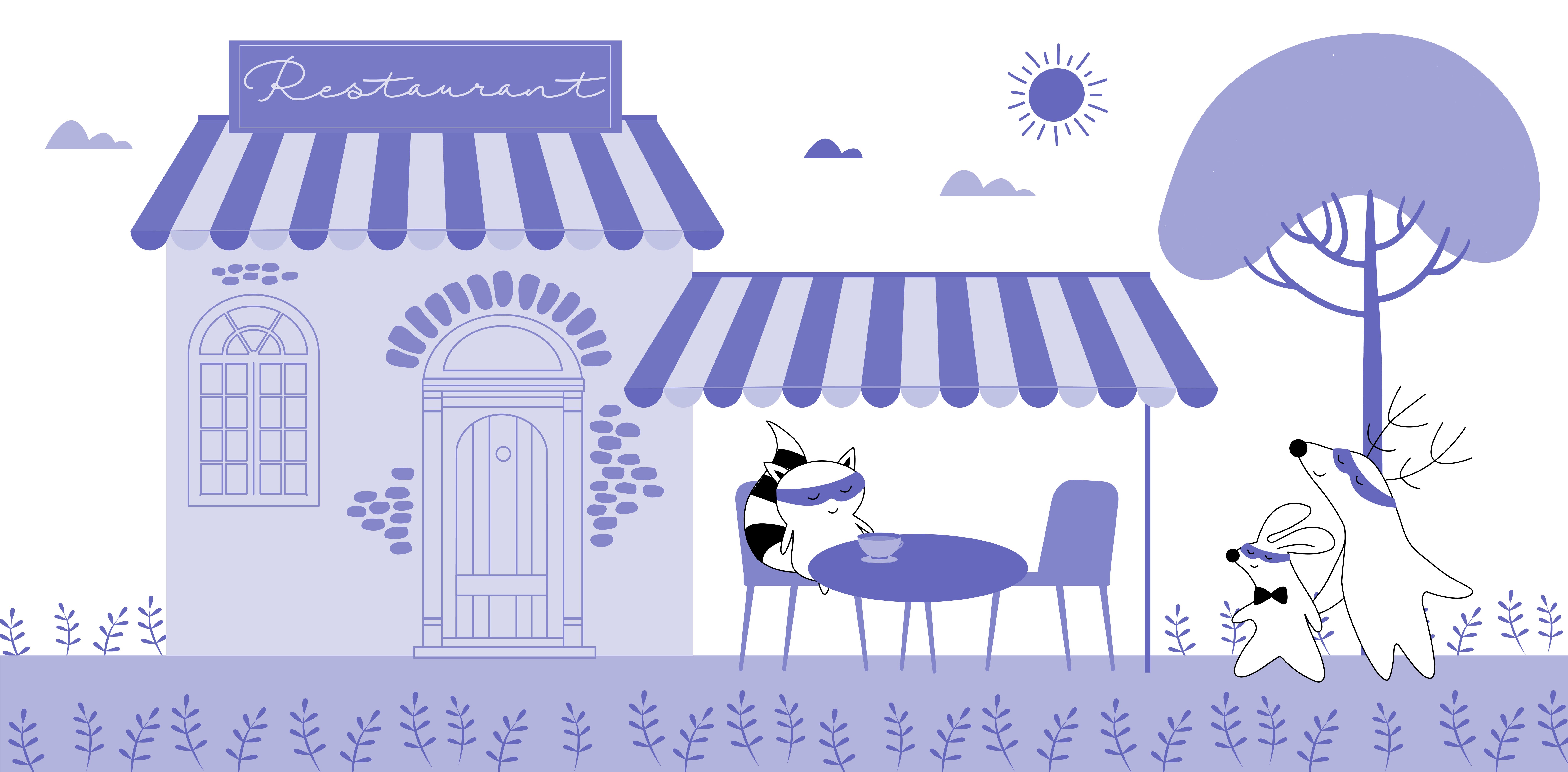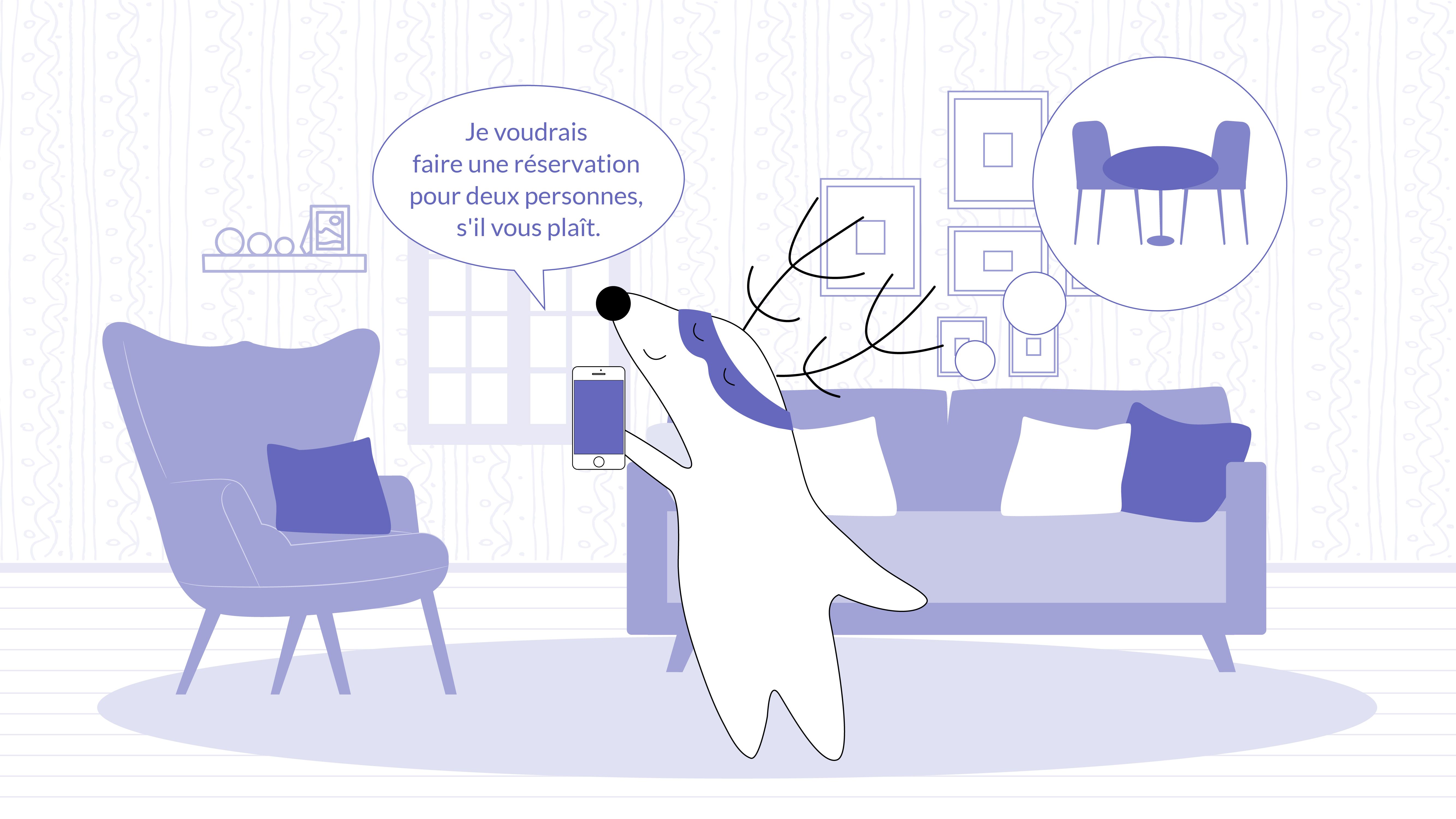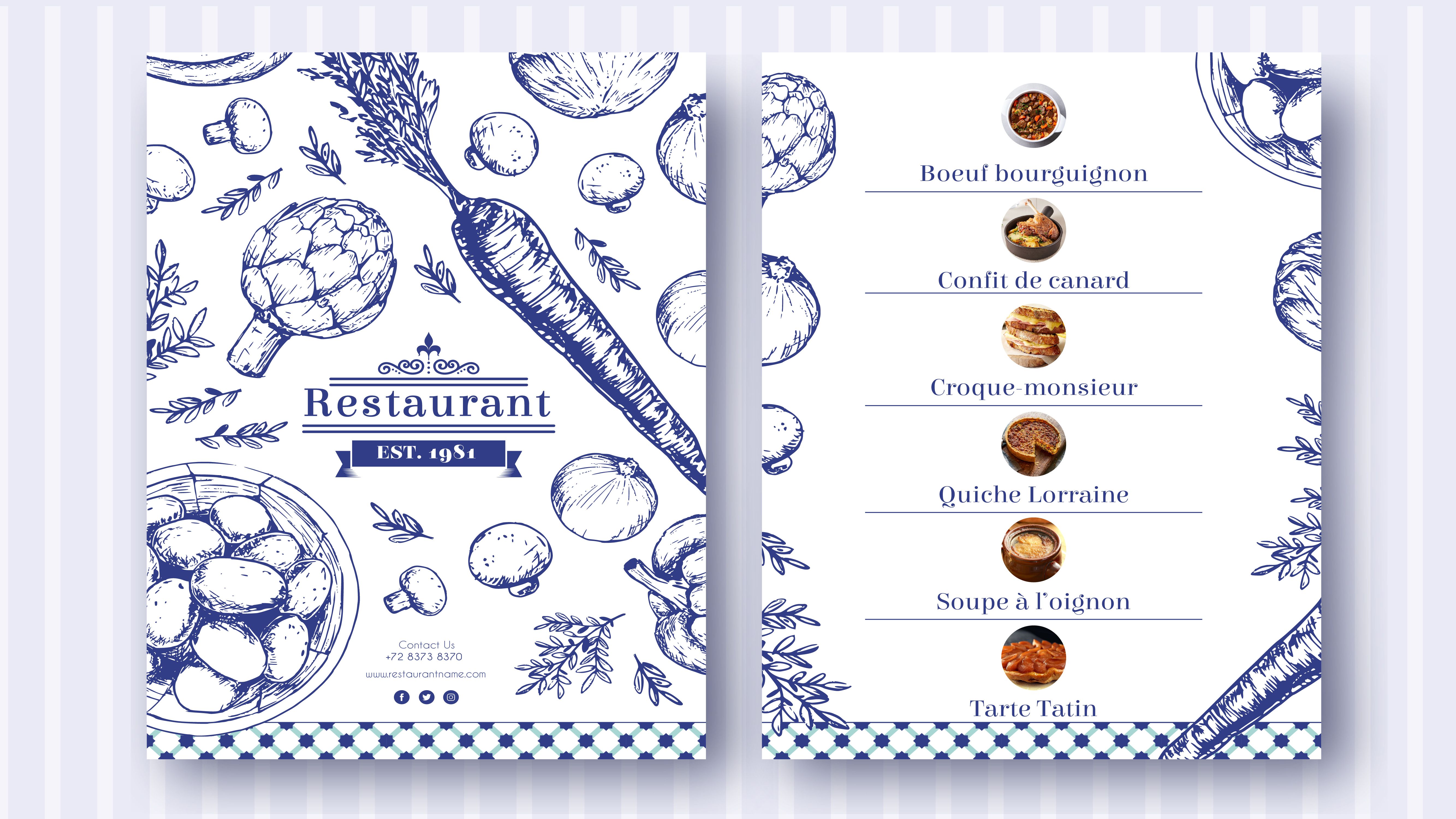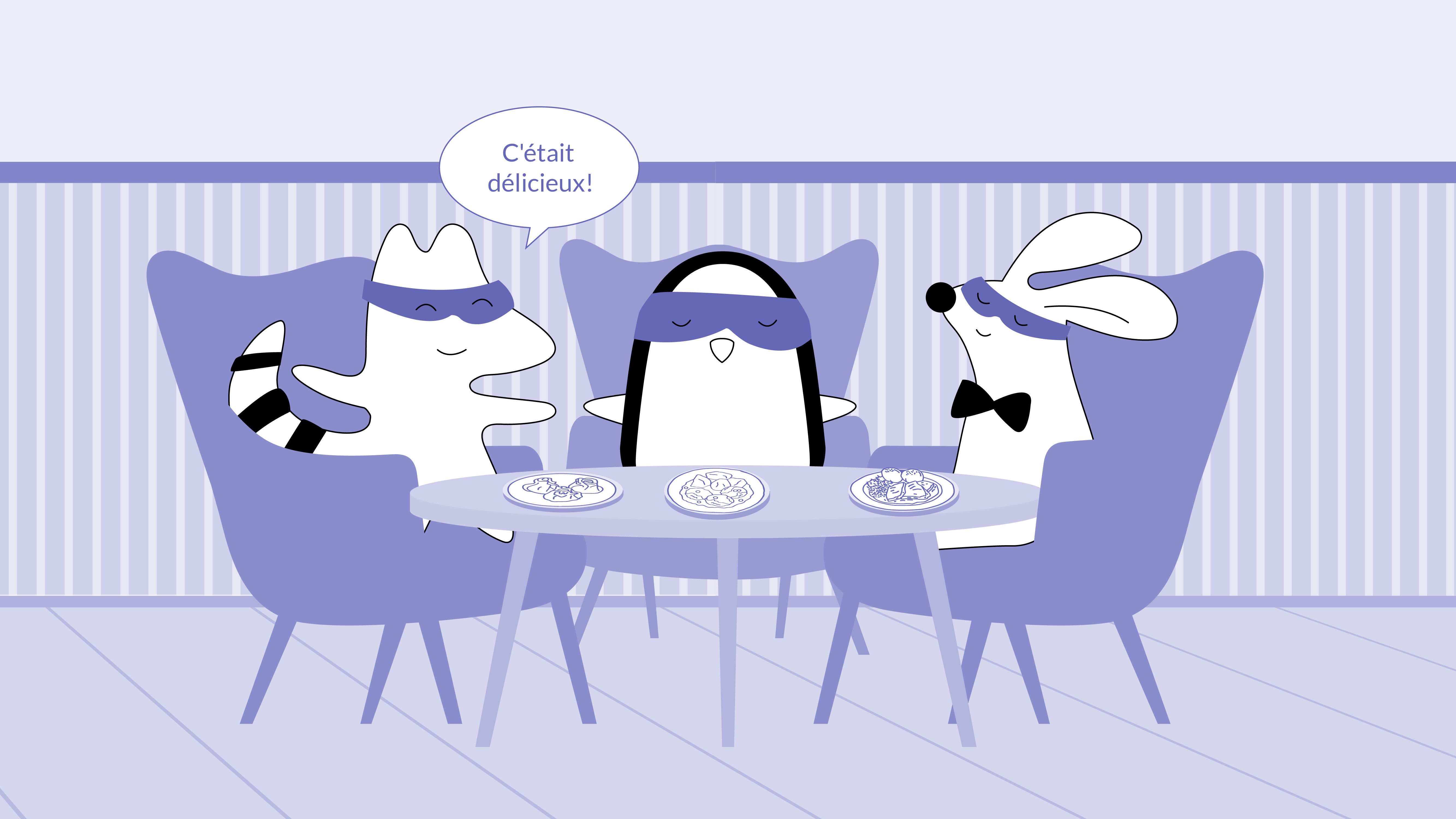
When it comes to fine dining, nothing beats a classic French restaurant. From the chic decor and cozy atmosphere to the delectable food and impeccable service, French restaurants offer an unforgettable experience for any occasion. But, if you’re not familiar with the language or culture of France, ordering a meal can be quite intimidating.
Don’t worry, though. Whether you’re planning a romantic dinner date or simply want to enjoy some delicious cuisine in a new city, this article will guide you through the process of ordering food in a French restaurant. Let’s dive in, and dine out.
Learn French with Langster
Choose the Restaurant
French restaurants come in all shapes and sizes, each offering its own unique dining experience. From a traditional Parisian bistro to a Michelin-starred establishment, there’s something for everyone. But, how do you choose the right French restaurant for you?
First and foremost, it’s important to consider your budget and preferences. If you’re looking for an exquisite yet affordable meal, consider trying out a local bistro or brasserie. These restaurants typically offer basic fares such as frites and croque monsieur.
On the other hand, if you’re after a fine dining experience with high-quality ingredients and innovative dishes, then splurge on one of the many renowned French restaurants that have been awarded Michelin stars.
When researching places to eat online, take some time to read reviews from previous customers. This should give you a good indication as to what kind of service and food quality you can expect at the restaurant.
Consider also checking out their menus before making a reservation so that you can have an idea of what dishes they serve and if they fit your dietary restrictions or preferences.
It is also worth noting that different French restaurants specialize in different types of cuisine – be it classic French dishes or modern interpretations thereof – so make sure to pick one that matches your tastes.
A great way to do this is by taking note of any awards the establishment has received from culinary institutions such as the Michelin guide or Gault & Millau guidebook. Both are internationally renowned for their strict criteria when rating chefs and eateries alike.
And lastly, always remember that at the end of the day, it comes down to personal preference; choose a restaurant where you feel comfortable, no matter how fancy it may be. After all, all anyone really wants from an enjoyable dining experience is good food coupled with excellent service – both of which can be found even in simpler settings.
Make a Reservation

Once you’ve chosen your restaurant, it is paramount that you make a reservation in advance. It’s no secret that French restaurants can get busy, and unless you plan on eating as soon as they open their doors, chances are the best tables will already be occupied by the time you arrive.
When making a reservation, keep in mind that most establishments ask for details such as the number of people in your party and any special requests or dietary restrictions. If possible, provide them with both so that they can better accommodate your needs. This is also the time to mention whether you’d prefer a table inside or outside, if the restaurant provides outdoor seating.
Also, be sure to ask about any payment options – most places allow you to pay via card or cash, while some may even offer discounts for paying the bill (or at least part of it) upon booking.
Here are some phrases that can help you with this step:
French
English
Je voudrais faire une réservation pour trois personnes, s'il vous plaît.
I would like to make a reservation for three people please.
Bonjour ! Une table pour deux personnes, s'il vous plaît !
Hello! A table for two people, please!
Bonjour, nous sommes trois. | Bonjour, c’est pour trois.
Hello, we are three people.
Je préfère à l'intérieur.
I prefer the inside.
Je préfère à l'extérieur/en terrasse.
I prefer the outside.
Nous aurons besoin d'une chaise bébé.
We will need a baby chair.
Avez-vous des tables disponibles pour un groupe de quatre personnes ?
Do you have any tables available for a group of four?
Nous sommes sept. Avez-vous des tables disponibles pour le déjeuner, dîner ?
I have a large group of seven people. Do you have tables available for lunch, dinner?
Avez-vous des menus fixes pour les groupes ?
Do you have set menus for groups?
Navigate a French Menu
Once you’ve arrived at the restaurant, it is time to select what dishes you want to order. For those not familiar with French cuisine, this can be quite a daunting task. The trick is to take your time and read through the menu carefully before making any decisions.
Most menus in France are divided into several sections: starters, main courses, side dishes, desserts, and drinks. You might also see some words that refer to methods of cooking that give dishes a unique flavor.
Here are all the French words and phrases you need to know to understand the menu in a French restaurant. Knowing these terms will help you easily spot each item on the menu and make an informed decision about what to order.
French
English
La carte
Menu
À la carte
From the menu
Prix fixe
Set menu
L’entrée
Appetizer
Le plat principal
Main dish
Le fromage
Cheese plate
Le dessert
Dessert
Le digestif
After-dinner drink
Le petit-déjeuner
Breakfast
Le déjeuner
Lunch
Le dîner
Dinner
Know Your Options
Now that you are familiar with the menu, it is time to decide what dishes to order. French restaurants usually offer a range of classic French cuisine options such as steak frites, salmon en croûte, or coq au vin.
For those looking for something more exotic, there are also specialty dishes like escargots de Bourgogne or lapin à la moutarde. And, of course, there are always restaurants that specialize in contemporary French cuisine and prepare really flamboyant dishes.
To help you understand what dishes are on the menu, here are the words you should be familiar with:
Common French Food
French
English
Agneau
Lamb
Beurre
Butter
Bœuf
Beef
Calamar, calmar
Squid
Crevettes
Prawns
Escargots
Snails
Hamburger
Burger
Huile d'olive
Olive oil
Huîtres
Oysters
Lapin
Rabbit
Légumes
Vegetables
Moules
Mussels
Nouilles
Noodles
Œufs
Eggs
Olives
Olives
Paella
Paella
Pain
Bread
Pâtes
Pasta
Plateau de fromage
Cheese plate
Poisson
Fish
Pommes de terre
Potatoes
Porc
Pork
Poulet
Chicken
Riz
Rice
Salade
Salad
Sandwich
Sandwich
Sauce
Sauce
Soupe | Velouté | Potage
Soup
Steak
Steak
Tacos
Tacos
Drinks
French
English
Eau
Water
Vin
Wine
Et une carafe d’eau, s’il vous plaît.
And a carafe of water, please.
Je voudrais une bouteille d’eau minéral, d’eau gazeuse.
I would like a bottle of mineral water, sparkling water.
Un rouge, un blanc
A red, a white (wine)
Une bouteille de rouge, de blanc
A bottle of red, white (wine)
Un thé
(A cup of) tea
Un café
(A cup of) coffee
Une infusion
Herbal tea
Want to learn more French food vocabulary? Check this article.
Common French Dishes
French
English
Boeuf bourguignon
Beef Burgundy, beef stew braised with red wine
Bouillabaisse
traditional French fish soup made with different types of fish, especially sea bass, red rascasse, sea urchins, etc.
Cassoulet
a stew with white beans and meat
Chocolate soufflé
chocolate souffle with crispy crust and creamy chocolate inside
Confit de canard
duck, marinated and slow-cooked with butter and herbs, typically served with roasted potatoes and garlic
Coq au vin
chicken braised with wine, literally translated as “rooster in wine”
Crêpes Suzette
crêpes, or pancakes with butter, lemon, caramelized sugar, and triple sec, flambéed
Croque-monsieur
a hot sandwich with ham and cheese, often served with vegetables
Croque-madame
a variation of croque-monsieur with a poached or fried egg on top
Escargot
land snails, usually served with vegetables and several sauces
Quiche Lorraine
a tart consisting of pastry crust filled with custard and pieces of cheese, meat, seafood, or vegetables
Ratatouille
vegetables, shallow-fried and then baked in a casserole
Salade Niçoise
a salad that usually includes lettuce, tomatoes, boiled eggs, tuna, green beans, olives, and anchovies
Salmon en papillote
salmon baked in parchment
Soupe à l’oignon
onion soup
Tarte Tatin
a tart made with caramelized fruit, typically apples
Choose the Right Meat
If you select meat as your main course, the waiter will ask about how cooked you'd like it. This will often happen, for example, if you order a steak or beef in general. Note that some French dishes, like duck breast, are always served rare.

Here are the five degrees of cooking meat in French:
French
English
bleu
very rare: very red in the middle and lukewarm
saignant
rare: red in the middle
à point
medium rare: pink in the middle
cuit
cooked: slightly pinkish in the middle
bien cuit
well done
Order It
Once you’ve chosen your dishes, it is time to order them properly. The waiter will ask you:
French
English
Bonjour, vous avez choisi ou vous avez besoin d’un peu plus de temps ?
Hello, are you ready to order, or do you need more time?
Vous prendrez une boisson pour commencer ?
Will you have a drink to start?
Très bien, et comme entrée ?
Very well, and for the appetizer?
Et comme plat principal ?
And for the main course?
Vous prendrez un fromage? Un dessert? Un café ou un thé ?
Will you have cheese? Dessert? Coffee or tea?
Je peux vous proposer un digestif?
Can I suggest a digestive?
Here are the responses you can use:
French
English
Je voudrais…
I would like…
Je vais prendre…
I will have…
Puis-je commander un…
May I please order… (a cocktail, a bottle of wine)
Pourrais-je voir la carte des boissons ?
Could I please see the drinks menu?
Que me recommandez-vous ?
What do you recommend?
Quel est le plat du jour ?
What are the specials of the day?
Est-il possible de commander ce plat sans…. ?
Is it possible to order this dish without…
Puis-je remplacer le dessert par du fromage dans le menu ?
Can I replace the dessert with cheese in the menu?
Le dessert est-il maison ?
Is the dessert home-made?
When deciding on your order, don’t forget to ask your server about any specials they might have – these are usually traditional dishes made to the chef’s own recipe and can make for a truly unique eating experience.

And, don't be afraid to ask questions – most French restaurants are very accommodating and will be more than happy to help with any queries or requests you may have!
If you have any dietary restrictions or preferences, make sure to mention them when ordering your meal. Most restaurants in France are happy to accommodate guests who follow specific diets such as vegetarianism, veganism, gluten-free, and dairy-free.
Just ask your server if they have any options available that fit your needs, and they should be able to provide you with some suitable alternatives.
Finally, don’t forget about allergies. Be sure to inform the staff of any food allergies you may have before placing your order so that you can ensure a safe meal. Here’s some vocabulary to communicate any restrictions:
French
English
Je suis allergique à...
I’m allergic to…
Je suis diabétique.
I am diabetic.
Je suis végétarien, végétarienne
I am vegetarian.
Je suis végétalien, végétalienne
I am vegan.
Quelles sont les options végétariennes ?
What are the vegetarian options?
Ask for the Bill
When you’re finished with your meal, it is time to ask for the bill. The French word for ‘the bill’ is l’addition – remember this phrase, and you won't have any trouble asking for what you owe!
Let’s learn some other helpful vocabulary to go along with it:
French
English
L’addition
the bill
Puis-je avoir l'addition, s'il vous plaît ?
Could I please have the bill?
Le pourboire est-il inclus ?
Is the tip included?
Est-ce que je peux payer avec la carte bancaire ?
Can I pay with a credit card?
Il semble y avoir une erreur avec la facture. L’addition semble être trop élevée !
There seems to be a mistake with the bill. It seems to be too high!
And, of course, remember to practice French numbers to make sure you get the sum right.
Comment on the Food
Once your meal is over, it’s polite to give feedback or comment on the food. If you enjoyed your meal, saying something positive is a great way to show appreciation for the French chefs and waiters who served you.
Here are some useful phrases for this situation:
French
English
C'était délicieux !
That was delicious!
Félicitations au chef !
Compliments to the chef!
C’était bon, merci.
It was good, thank you.
Enjoy Your Meal!

Many people are intimidated by the prospect of ordering food in a French restaurant. However, with a little bit of knowledge, anyone can order their meal with confidence and make sure they get the unique dining experience that French cuisine offers.
Hopefully, with these tips in mind, your next trip to a French restaurant will be enjoyable. Relax, have fun, and don’t worry about making a mistake – you can always ask questions if you need help understanding menu items or making special requests. Enjoy the food – bon appétit!









